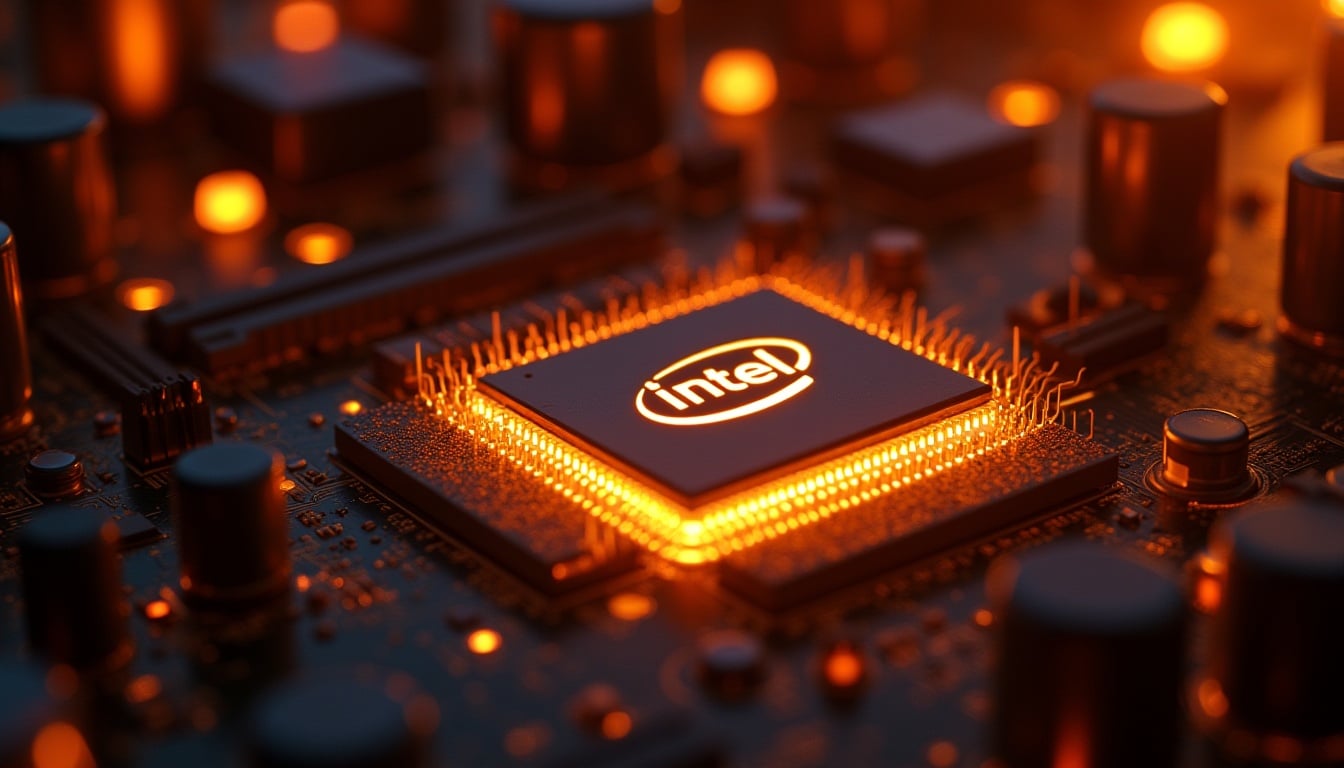The future of Intel might be on the verge of a historic shift. According to Bloomberg, the Trump administration is considering , a move reflecting increased government intervention in strategic industries.
This news emerged after a meeting between Donald Trump and Lip-Bu Tan, Intel’s CEO, which was controversy-laden: the former president allegedly demanded the executive’s resignation over his investments in Chinese tech companies linked to their military. Although there’s no official confirmation, the rumor was enough to cause Intel’s stock to jump by 7.38% on the stock market.
—
From Partner to Shareholder: a Paradigm Shift
Government involvement in a private company of this size is uncommon in the U.S. but understandable in this context. As Washington watches competitors like NVIDIA and AMD dominate AI chip markets, and as China accelerates its technological advancements, Intel has become a national strategic asset.
The government’s interest is less about CPUs and more about its foundry capacity. Intel maintains agreements with the Department of Defense to produce advanced chips, making its stability a matter of national security.
Neglecting Intel would mean relying on foreign foundries—particularly TSMC in Taiwan—to produce sensitive chips for military and government use. Such dependence is unacceptable in the current geopolitical landscape.
—
The Ohio Plant: A Symbol of Industrial Commitment
One of the main reasons behind the possible infusion of public capital is the semiconductor manufacturing plant in Ohio, a project valued at over $20 billion. Initially seen as a way to restore Intel’s manufacturing leadership, its launch has been delayed until 2030 or even 2031.
Government involvement as a shareholder or financial partner could speed up construction, providing a boost to the company and ensuring the U.S. maintains production strength against Asian competition.
Additionally, other investments in manufacturing capacity could be accelerated, potentially including subsidies, preferential licenses, and public contracts, spanning defense and AI.
—
From $288 Billion to $105 Billion: The Decline of a Giant
Intel’s decline explains the urgency behind this measure. In 2020, the company was valued at around $288 billion. Today, its market capitalization is roughly $105 billion, reflecting delays in innovation, losing market share to competitors, and difficulty transitioning to next-generation chips.
Government investment aims not only to halt this decline but also to project confidence in international markets by positioning Intel as an asset protected by Washington.
—
Risks of Partial Nationalization
However, the plan carries risks. State involvement could lead to political interference in corporate decisions, tensions with international clients, and mistrust among private investors wary of losing independence.
It would also signify a cultural shift in U.S. industrial policy, resembling “state capitalism” more typical of China or Europe, where public support for strategic companies is more common.
—
A New Chapter in the Tech War with China
Beyond corporate strategy, this move should be viewed through a geopolitical lens. Washington has been tightening control over exporting advanced chips to China for years—initially restricting AI GPU sales, then requiring companies like NVIDIA and AMD to develop Chinese-specific versions.
There have even been talks of agreements forcing these companies to share up to 15% of revenues earned in China as a condition for export licenses.
The potential government stake in Intel would be another step in this direction: safeguarding national technological capabilities and reducing reliance on foreign sources in a sector that has become the cornerstone of 21st-century economic and military power.
—
FAQs
1. Why does the U.S. want to invest in Intel?
Primarily because of its role as a foundry for strategic chips used in defense and national security, rather than its processor business.
2. What impact would this capital injection have on Intel?
It would accelerate key projects like the Ohio plant, provide financial stability, and bolster its image as a strategic asset protected by the government.
3. What are the risks of this move?
It could lead to political interference in the company’s management, conflicts with international clients, and mistrust among private investors.
4. How does this fit into the tech war with China?
It’s part of Washington’s strategy to limit China’s access to cutting-edge chips and strengthen its own industrial capacity in a critical sector.

